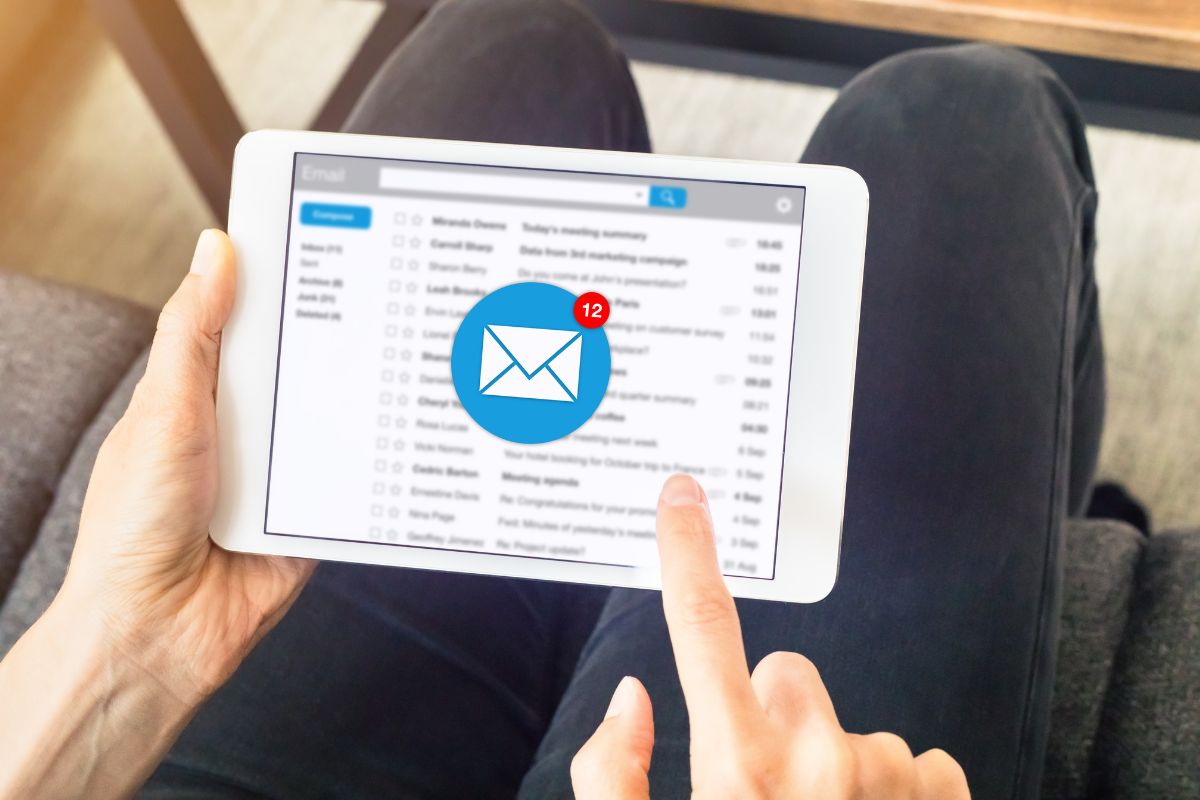Introduction to Business Email Security
In the digital age, email remains a cornerstone of business communication, but it also represents one of the most significant vectors for security breaches and data loss. Securing business email communications cannot be overstated; it is not merely a technical necessity but a critical business practice. Protecting sensitive information within emails is essential to maintain trust, comply with regulations, and safeguard the integrity of business operations.
The stakes are high – a single compromised email can lead to financial loss, legal repercussions, and damage to an organization’s reputation. As cyber threats become more sophisticated, the need for robust business email security measures becomes paramount. This not only involves the use of advanced technological tools but also encompasses policies, training, and a culture of security within the organization.
This introduction sets the stage to explore the layers of email security, understand the potential risks, and implement best practices to keep sensitive business information out of the hands of unauthorized parties.
Understanding and implementing secure business email practices is a shared responsibility across all levels of an organization. As we proceed, we will uncover the actionable steps businesses can take to fortify their email systems and the common pitfalls to avoid, ensuring that your email communications are a secure conduit for your business operations.
Understanding the Risks to Sensitive Information in Emails
Emails often contain sensitive information ranging from personal data to critical business intelligence. Without proper safeguards, this information can be exposed to numerous risks, leading to potentially severe consequences.
The Consequences of Data Breaches
When sensitive data falls into the wrong hands through an email breach, the consequences can be far-reaching. Businesses may face legal action if they fail to protect customer data, not to mention the long-term reputational damage that can undermine customer confidence and loyalty. The recovery process from a data breach is often costly and time-consuming, as it involves not only rectifying the security shortcomings but also repairing the organization’s tarnished image.
Common Email Security Threats
The landscape of email security threats is diverse and constantly evolving. Phishing attacks are among the most prevalent, where attackers masquerade as trustworthy entities to lure individuals into providing sensitive data. Spear-phishing, a more targeted version, involves meticulously crafted emails aimed at specific individuals or organizations.
Malware, which can be embedded in email attachments or links, is another common threat that can lead to data theft or data encryption for ransom. Man-in-the-middle (MITM) attacks, where attackers intercept and potentially alter the communication between two parties, pose another risk, especially when emails are sent over unsecured or public Wi-Fi networks.
Other threats include social engineering tactics that exploit human psychology to trick recipients into breaking normal security procedures and business email compromise (BEC) scams that often involve fraudulent requests for money transfers or sensitive data.
In the following sections, we will dissect these threats in detail and outline the strategic defenses that can be employed to protect sensitive information against the ever-growing array of email security threats.
Key Practices for Secure Business Emailing
To maintain the confidentiality and integrity of business communications, adopting key security practices is essential. Secure emailing is not a one-time setup but a continuous process of implementing and updating defensive measures.
The Role of Encryption in Email Security
Encryption stands as a cornerstone in the safeguarding of email security. It is a critical barrier, transforming readable data into a coded form that can only be accessed with the right decryption key, usually as a password or passphrase. This means that even if an unauthorized party intercepts the email, the information contained within remains unintelligible and secure.
Two primary forms of email encryption exist at rest’, which secures stored emails, and ‘in transit’, which protects emails during their sending and receiving process. Employing both types ensures end-to-end protection of your data. Furthermore, Transport Layer Security (TLS) can help protect the communication channel when an email is in transit. At the same time, tools like Pretty Good Privacy (PGP) and Secure/Multipurpose Internet Mail Extensions (S/MIME) are standards for encrypting the content of the emails themselves.
Implementing Strong Password Policies
Strong password policies are crucial in safeguarding access to email accounts. Weak passwords can easily be breached, giving attackers the keys to sensitive information. It should also mandate regular password changes and prohibit the reuse of previous passwords.
These practices are the bedrock of secure business emailing and form the first defense against unauthorized access to sensitive information.
Advanced Security Measures
Incorporating advanced security measures into your business email practices is essential for safeguarding against sophisticated cyber threats. These measures help to mitigate risks and protect your sensitive information.
Two-factor authentication (2FA) for Email Access
Two-factor Authentication (2FA) greatly enhances email account security by requiring two distinct forms of identification before access is granted. Typically, this involves something the user knows (like a password) and something the user has (such as a mobile device for receiving a verification code or a hardware token). This dual-verification approach ensures that even if a password is compromised, an attacker cannot access the email account without the second authentication factor.
Implementing 2FA not only adds an extra layer of defense but also acts as a deterrent. It is one of the most effective methods for preventing unauthorized access, significantly reducing the likelihood of successful phishing attempts or account breaches.
Using Secure Email Gateways
Secure Email Gateways (SEGs) are critical to protecting against email threats. They are the intermediaries between incoming and outgoing email traffic and your business’s email infrastructure. SEGs scan emails for hazards like viruses, malware, spam, phishing attacks, and other malicious content.
Beyond filtering harmful content, SEGs also enforce email security policies. They can ensure that sensitive information is encrypted, prevent the transmission of unauthorized data, and provide detailed logs and reports on email traffic. This helps in both preventing attacks and in the forensic analysis should a security incident occur.
Email Security Protocols and Compliance
Navigating the complex landscape of email security involves beyond merely technological fixes; it also necessitates strict adherence to legal and regulatory standards. Ensuring compliance with these protocols not only protects sensitive information but also shields an organization from legal consequences.
Email Retention Policies and Best Practices
Email retention policies are critical for compliance, litigation readiness, and information management. They dictate how long emails should be kept and the manner of their disposal. For many industries, there are specific regulatory requirements that dictate retention periods. Best practices in email retention include:
- Clearly defining what emails are considered records and need to be retained.
- Setting standardized retention periods based on legal, operational, and regulatory requirements.
- Implementing an email archiving solution that allows for secure storage and easy retrieval of emails.
- Training staff on the importance of adhering to the email retention policy and how to archive or delete emails properly.
In establishing email retention policies, it is vital to balance the need to keep important data with the risks of holding onto information longer than necessary. A well-crafted approach not only ensures compliance with data protection laws but also aids in efficient data management and retrieval, saving time and resources in the long run.
Training and Awareness
Effective email security is as much about people as it is about technology. Training and awareness are crucial components of a comprehensive email security strategy, ensuring that all employees understand their role in maintaining the integrity of sensitive information.
Developing a Secure Email Culture in Your Organization
Creating a secure email culture within an organization starts at the top and filters down to every level of the workforce. It involves establishing a mindset where security is a priority in every email sent or received. To cultivate this culture:
- Leaders must communicate the importance of email security and set an example by adhering to best practices.
- Policies should be clear, accessible, and enforced, with procedures in place for reporting and responding to email security incidents.
- Encourage open dialogue about security, allowing employees to report potential threats or vulnerabilities without fear of reprisal.
- Recognize and reward secure behavior to reinforce the value placed on security within the organization.
Regular Security Awareness Training for Employees
Continuous education on email security risks and best practices is essential in keeping up with the evolving threat landscape. Regular training sessions should be:
- They are conducted periodically to refresh knowledge and cover new threats.
- Tailored to different departments, acknowledging the specific risks and needs of each area.
- Interactive and engaging, using real-world scenarios and simulations to demonstrate the impact of security breaches.
- Inclusive of the latest security tools and protocols, empowering employees with up-to-date knowledge to protect themselves and the organization.
Through ongoing training and developing a strong security culture, organizations can significantly mitigate the human factor as a security risk, making each employee a proactive defender against email threats.
Best Tools and Services for Email Security
Securing business emails requires robust tools and services to protect against various threats. From specialized software to secure hosting services, the right tools can make all the difference in safeguarding your communications.
Reviewing Top Email Security Software
A range of email security software solutions is available in the market, each with its features and benefits. When reviewing these tools, businesses should consider the following:
- Anti-spam and anti-malware capabilities, ensuring incoming emails are scanned and cleansed of malicious content.
- Advanced threat protection features, such as link checking and attachment sandboxing, provide additional layers of scrutiny.
- Data loss prevention (DLP) functionalities help prevent sensitive information from being shared accidentally or maliciously.
- Email encryption services to ensure that data in transit is protected from interception.
Selecting the top email security software often involves comparing industry leaders, assessing user reviews, and considering integration capabilities with your existing infrastructure.
Secure Email Hosting Providers
Choosing a secure email hosting provider is another critical decision for businesses. A secure provider will offer:
- End-to-end encryption options ensure that emails are only readable by the intended recipient.
- Two-factor authentication and other access control measures to protect email accounts from unauthorized use.
- Regular backups and archiving solutions to prevent data loss and facilitate compliance with retention policies.
- A strong track record of uptime and support, minimizing the risk of email-related disruptions to your business operations.
The right hosting provider will not only offer these technical features but also demonstrate a commitment to privacy and security through their practices and policies. Businesses should look for providers that prioritize safety and offer a transparent approach to data management and protection.
Case Studies and Examples
Analyzing real-world instances provides invaluable insights into the effectiveness of email security measures and the consequences when they fail. Through case studies and examples, organizations can learn best practices and strategies to improve their email security protocols.
Success Stories in Secure Email Implementation
Numerous examples of companies successfully implementing secure email systems showcasing the benefits of proactive email security measures. For instance, a case study might illustrate how a financial institution implemented advanced encryption and anti-phishing training, which led to a significant reduction in fraudulent incidents. Another success story could detail how a healthcare provider adopted secure email practices to protect patient data, leading to enhanced compliance with HIPAA regulations and improved patient trust.
These success stories often highlight the following:
- The initial challenges the organization faced regarding email security.
- The specific solutions that were implemented to address these challenges.
- The results and benefits observed following the implementation.
- Ongoing strategies to maintain and improve email security.
- Lessons Learned from Email Security Breaches
Conversely, analyzing security breaches can teach what to avoid and how to respond effectively to incidents. A case study might delve into a corporation’s experience with a targeted phishing scam that resulted in a data breach, discussing the exploited vulnerabilities and the aftermath of the event.
Key takeaways often include:
- The initial point of failure or security lapse that led to the breach.
- The immediate and long-term consequences for the organization.
- The steps are taken to address and recover from the breach.
- Changes and improvements made to prevent similar incidents in the future.
Both case studies serve as educational tools, providing actionable insights and reinforcing the importance of email security in a business context. They offer a practical perspective on the abstract principles of email security, grounding them in the reality of everyday business operations.











